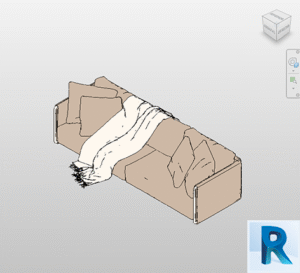In the evolving landscape of architecture, engineering, and construction (AEC), Building Information Modeling (BIM) has emerged as a revolutionary methodology reshaping how public infrastructure projects are conceived, executed, and maintained. By integrating multidisciplinary data into a cohesive digital model, BIM facilitates enhanced collaboration, efficiency, and innovation. This article delves into the strategic implementation of BIM in public sector pilot projects, highlighting substantial benefits such as cost reduction, error minimization, and improved project sustainability through digital innovation.
The Transformative Power of BIM in Public Projects

BIM transcends traditional project management by offering a multidimensional model that encapsulates not just the physical aspects of construction but also the functional characteristics over a project’s lifecycle. In public infrastructure, where projects are often large-scale and involve multiple stakeholders—from government agencies to contractors and the public—BIM’s ability to facilitate clear communication and collaboration is invaluable.
By enabling detailed 3D visualizations and simulations, BIM helps anticipate and resolve potential conflicts before they manifest on-site. For instance, clash detection tools can identify spatial conflicts between mechanical, electrical, and plumbing (MEP) systems early in the design phase, preventing costly delays and rework during construction. This proactive approach is crucial in public projects, which are typically bound by strict budgets, timelines, and regulatory requirements.
Implementing BIM in Public Infrastructure: A Phased Approach
Adopting BIM in the public sector requires a structured, methodical approach to ensure successful integration and sustainability. The following phases outline a roadmap for public organizations to implement BIM effectively through pilot projects.
1. Selection of Suitable Pilot Projects
The initiation of BIM adoption begins with the careful selection of a pilot project. Criteria for selection include:
- Project Complexity: Projects with higher complexity stand to gain more from BIM’s capabilities.
- Organizational Readiness: Assessing the maturity of the organization’s processes and the readiness of stakeholders to adopt new technologies.
- Stakeholder Engagement: Ensuring all parties are willing to participate and collaborate using BIM methodologies.
Choosing the right pilot project allows organizations to manage risks and gather valuable insights before scaling BIM implementation across all projects.
2. Comprehensive Planning of BIM Implementation

In the planning phase, the organization defines clear objectives and outlines how BIM will be utilized to achieve them. Key considerations include:
- Defining BIM Uses: Identifying specific BIM applications such as 3D coordination, clash detection, quantity take-offs, and 4D scheduling (time).
- Developing a BIM Execution Plan (BEP): Establishing guidelines and protocols for BIM use, data exchange standards, and collaboration workflows.
- Setting Deliverables and Milestones: Aligning BIM activities with project timelines and deliverables to monitor progress effectively.
Thorough planning ensures that BIM implementation aligns with project goals and regulatory requirements, particularly important in the public sector where accountability is paramount.
3. Organizational Diagnosis and Capacity Building
Before fully embracing BIM, organizations must assess their current capabilities and identify gaps in technology, skills, and processes. This involves:
- Technological Assessment: Evaluating existing hardware and software infrastructure to support BIM applications.
- Skill Gap Analysis: Identifying training needs for staff and stakeholders to proficiently use BIM tools.
- Process Evaluation: Reviewing current workflows and modifying them to integrate BIM processes.
Investing in capacity building through training programs, certifications, and technology upgrades is essential to equip the team with the necessary competencies for BIM implementation.
4. Execution of the BIM Pilot Project
The implementation phase translates plans into action. Key steps include:
- Stakeholder Engagement: Ensuring all participants are committed to the BIM process, with clear roles and responsibilities.
- Data Management and Collaboration: Utilizing common data environments (CDE) for effective information sharing and collaboration.
- Continuous Monitoring and Feedback: Regularly reviewing progress, addressing challenges, and making adjustments as needed.
Deliverables such as the Employer’s Information Requirements (EIR) and the Asset Information Model (AIM) are crucial outcomes of this phase, providing detailed specifications and data for the project.
Long-Term Advantages of BIM in Public Infrastructure
Enhanced Operational Efficiency and Maintenance
BIM extends its benefits beyond construction into the operational phase of infrastructure assets. The creation of a detailed digital twin—a comprehensive digital representation of the physical asset—enables:
- Efficient Facility Management: Real-time monitoring and management of building systems, leading to proactive maintenance and reduced downtime.
- Data-Driven Decision Making: Access to accurate data facilitates informed decisions regarding renovations, upgrades, and resource allocation.
- Sustainability and Energy Efficiency: Analyzing energy consumption patterns to implement measures that reduce environmental impact and operating costs.
Lifecycle Cost Reduction
Public organizations are increasingly adopting BIM to optimize the total cost of ownership of infrastructure assets. BIM aids in:
- Lifecycle Analysis: Evaluating long-term performance and costs associated with maintenance, operations, and eventual decommissioning.
- Resource Optimization: Reducing material waste and inefficiencies during construction, contributing to cost savings.
- Risk Mitigation: Early detection of potential issues minimizes the likelihood of costly errors and legal disputes.
By embracing BIM, public infrastructure projects can achieve greater financial sustainability, meeting the demands of taxpayers and government oversight bodies.
Conclusion
The integration of BIM into public infrastructure projects through carefully planned pilot implementations offers a pathway to revolutionize the AEC industry. By fostering collaboration, enhancing efficiency, and providing tools for comprehensive lifecycle management, BIM stands as a cornerstone for innovation in public projects. As public organizations continue to adopt BIM, the potential for improved infrastructure that serves communities effectively and sustainably becomes increasingly attainable.
Free Revit families no Bimshares.com





